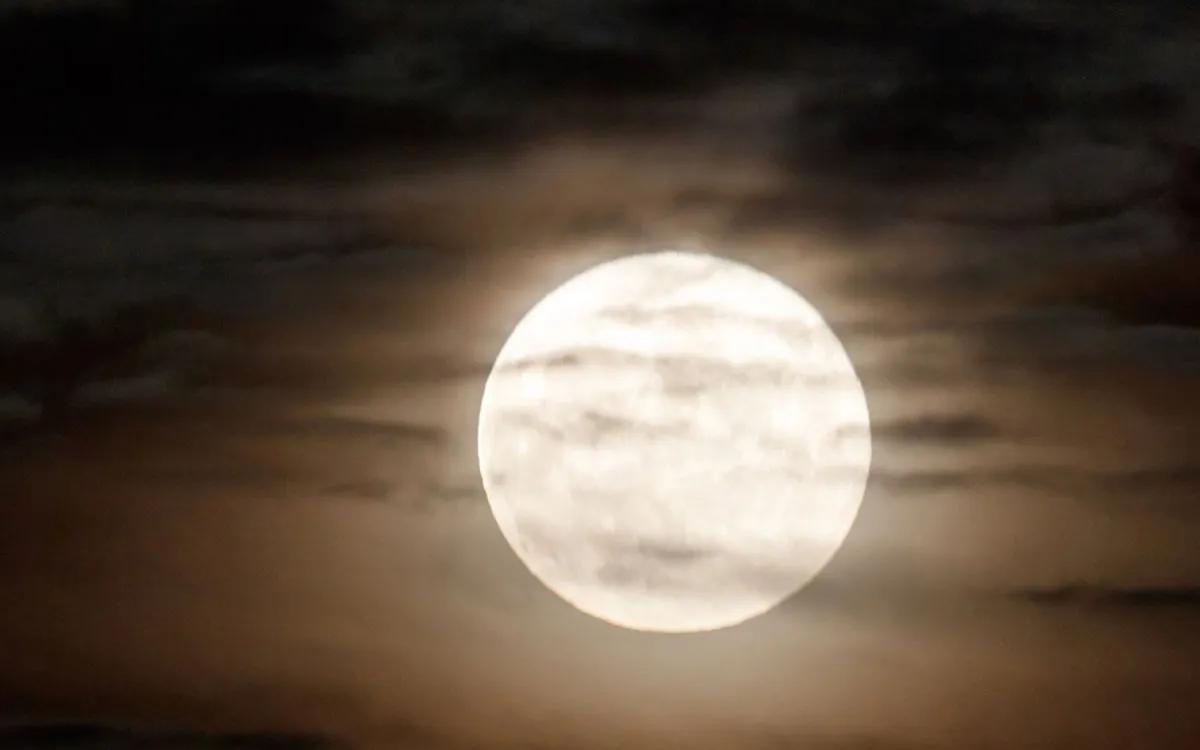
This year, the Beaver Moon is set to captivate stargazers as it makes its much-anticipated debut. This event marks the biggest and brightest golden-hued supermoon of 2023. To fully appreciate this dazzling sight, enthusiasts should look up at the night sky beginning on Tuesday, November 4. According to The Old Farmer's Almanac, this is the closest the moon will be to Earth this year, offering an extraordinary viewing opportunity.
The supermoon will reach its peak illumination at 8:19 a.m. ET on November 5; however, it will be below the horizon at that time. Therefore, the optimal time for viewing will be during the evenings of November 4 and 5. As the moon rises, it will emit a deep golden glow, appearing up to 16 percent brighter and 7 percent larger than its usual size, as reported by National Geographic. After this spectacular display, the moon will not appear as large and bright again until November 24, 2026.
The name Beaver Moon originates from the time of year when beavers typically begin to seek shelter in their lodges for the winter, according to The Old Farmer's Almanac. This playful moniker adds an interesting layer to the celestial event, drawing attention to both nature and astronomy.
If you're eager to enhance your moon-gazing experience, consider visiting one of America’s top Dark Sky parks. These protected areas boast exceptionally low light pollution, offering the perfect backdrop for a stunning star show. From the majestic Appalachian Mountains to the expansive Texas plains, these top Dark Sky sanctuaries provide some of the clearest views in the country, as highlighted in research shared with Travel + Leisure by Inghams Walking, a travel company specializing in outdoor adventures.
According to the study, the Mayland Earth to Sky Park and Bare Dark Sky Observatory in North Carolina have been ranked as the top Dark Sky park in the United States. This gem allows enthusiasts to look through the observatory’s telescope for an intimate view of the lunar rise or set up their own telescopes in the park’s flat viewing areas.
Next on the list is Texas' UbarU Camp and Retreat Center, a site that was once run by a Quaker community and remains committed to protecting the diverse wildlife in the area. Tennessee's Pickett CCC Memorial State Park and Pogue Creek Canyon State Natural Area rank third in the U.S. This park was first certified as a silver-tier Dark Sky park in 2015 and features an astronomy field available year-round.
While the majority of official Dark Sky parks are situated in the U.S., the Waterton-Glacier International Peace Park in Alberta, Canada, is recognized as the top Dark Sky park in the world. Nestled on the U.S. border, the park is home to stunning alpine and glacial features, as well as a rich diversity of plant and mammal species, according to UNESCO.
To derive its rankings, Inghams Walking analyzed global search data, Google reviews, and AllTrails scores for over 120 Dark Sky parks. Whether you’re a seasoned astronomer or a casual observer, make sure to mark your calendars for this year’s Beaver Moon and explore these incredible locations for an unforgettable experience under the stars.